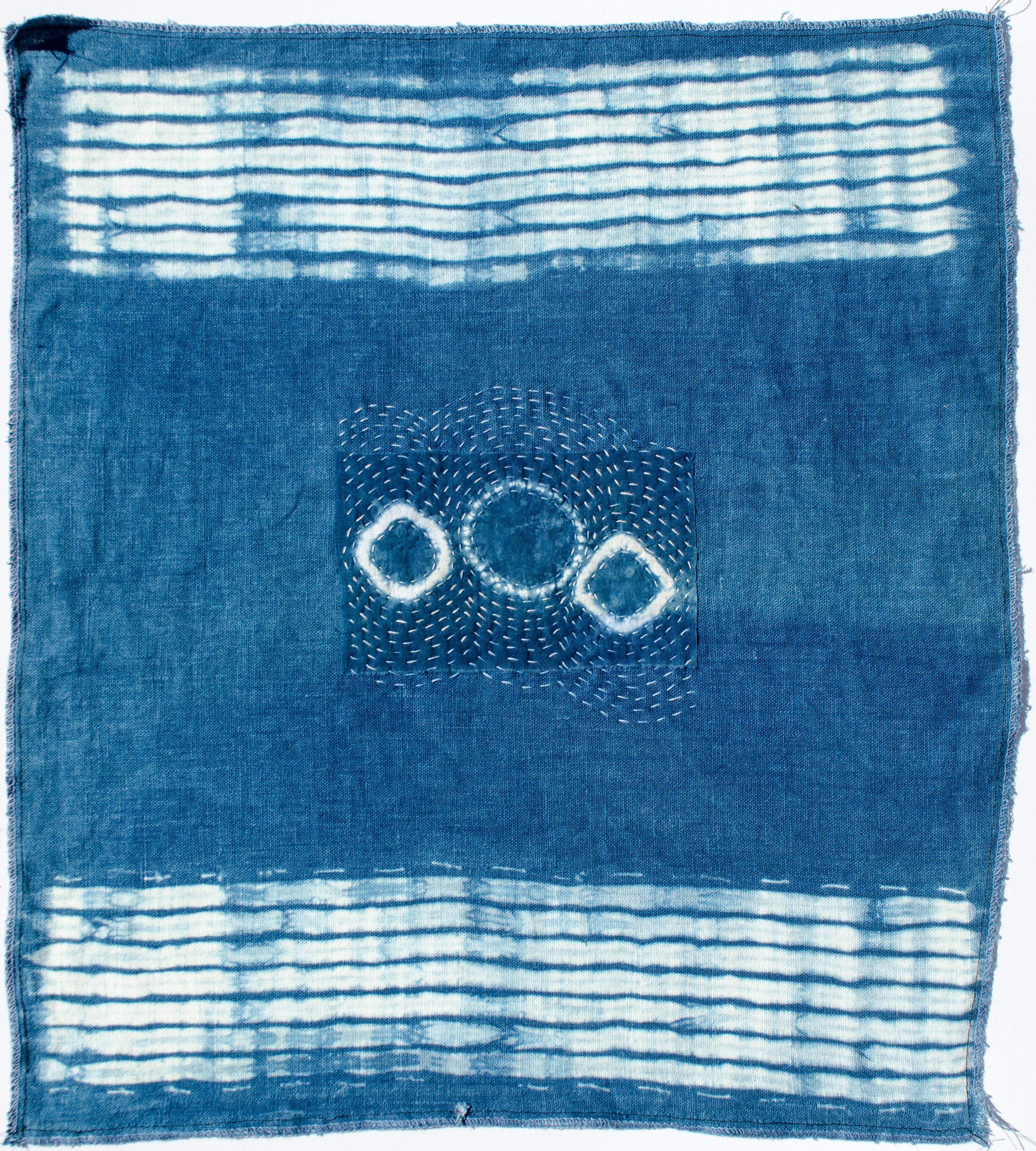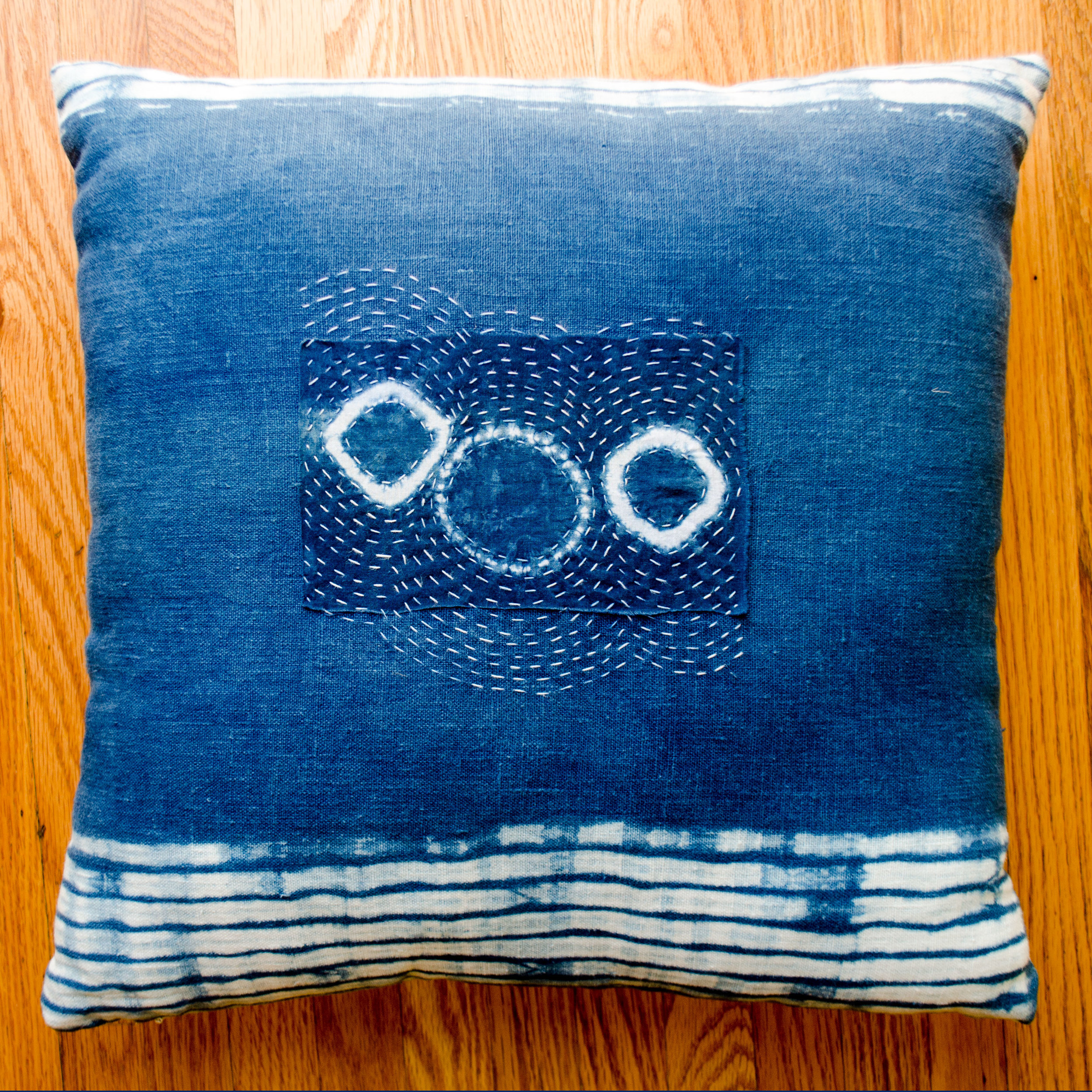As I was wandering through Anthropologie I noticed an "instant old" visibly mended garment. A couple of racks away, there was another. And then another. So, the trend has trickled down to mall shops.
I first became enamored with the art of mending when I saw Neil Young's jeans back in the '70s. At the time I knew nothing about Japanese boro mending, but once I saw it I was immediately hooked. The bag below, available on Etsy sums up just about everything I love - a mix of fabric types, some sashiko stitching and patching on top of patching.
And now, it's modern to mend. Tom of Holland has created a business of it, offering bespoke mending services and classes and workshops, mostly in Europe. He's even come up with a new name for the process, visible mending. His website and facebook pages are filled with great images and info. Take some time and visit.
Tom of Holland Visible Mending Linen Stripe
I was working on some new pillows and used scraps of dyed cotton that I stitched onto indigo linen as a decorative embellishment. In the case of the pillow below it was done to hide some odd spots that popped up after I'd dyed the linen. I didn't want to waste the linen, so I did a bit of artful mending.
Visible mending on a linen using a scrap of shibori dyed cotton
Although it's a new piece it has the appearance of wear and fading as a result of the indigo process. To my mind it really captured the feeling of an old Japanese boro piece, but it looks great in a modern room.
Shibori dyed linen pillow with hand-stitched boro patch
I was so happy with the way the pillow turned out that I was inspired to put a patch on an old favorite sweater I'd managed to wipe out with a large grease stain right in the middle of the front.
Sweater with a visible mend using a shibori dyed cotton patch
The sweater was a drab brown color, so I tossed it in the indigo vat for a could dips to give it blue overtones. Then I grabbed a little scrap of shibori dyed cotton and stitched it on using a simple running stitch. On my pillows I've been leaving some of the patches unstitched, but after a few washes I'll need to add some more stitches to this one to keep the edges from curling.






